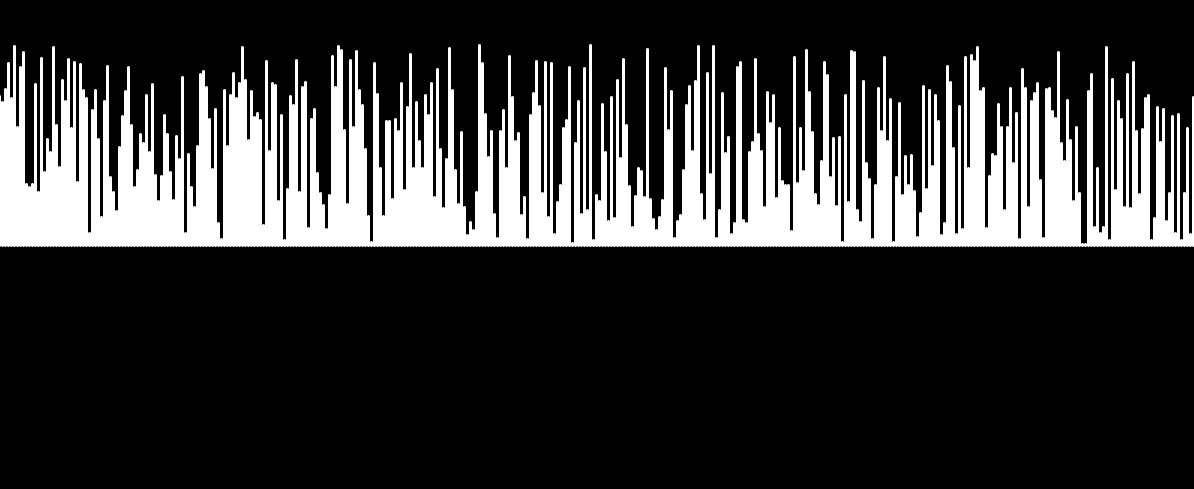Here are two examples that show the difference between using random values and the noise function in processing. Random will return a unique number each time it is run. Noise will return a value based on a Perlin noise map. In these examples we are creating a series of vertical lines whose height is based on random and noise based values.
void setup(){
size(1200,500);
noLoop();
}
void draw(){
background(0);
stroke(255);
strokeWeight(3);
float noisepos = 0;
for(int i = 0; i < width/3; i++){
float x1 = i * 3;
float y1 = height/2;
float x2 = i * 3;
float y2 = height/2 - random(200);
line(x1,y1,x2,y2);
noisepos = noisepos + 0.01;
}
}
void setup(){
size(1200,500);
noLoop();
}
void draw(){
background(0);
stroke(255);
strokeWeight(3);
float noisepos = 0;
for(int i = 0; i < width/3; i++){
float x1 = i * 3;
float y1 = height/2;
float x2 = i * 3;
float y2 = height/2 - noise(noisepos) * 200;
line(x1,y1,x2,y2);
noisepos = noisepos + 0.01;
}
}

